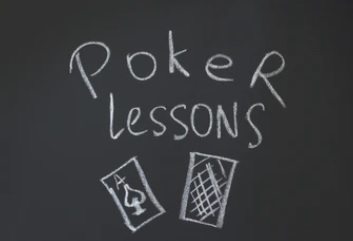In last week’s article, we looked at some of the reasons why equity isn’t the end-all, be-all of evaluating how two ranges will perform against each other. With that out of the way, we’re going to be able to get into the nitty gritty aspects of the things you can work on to get a feel for equity and how it changes throughout a hand. This week, we’re going to focus on what our equity looks like on the flop and how flop texture comes into play.
The Advantage of Having Draws on Wet Boards
We’ll start off with a basic example from a 100bb cash game. Suppose that a tight Villain in early position opens with {66+, AT+, KQ-QJ}, and Hero calls with {QQ-55, AQ, KQs-76s} on the button. The flop comes Qh9s6s. As it stands right now, Hero has a slight equity advantage of 53 percent against Villain’s 47 percent. While Villain tends to hit a lot of single-pair hands on this board like overpairs, top pair and second pair, he also tends to completely miss pretty often with his Ax that don’t make a pair. In comparison to that, Hero also makes a lot of single pair hands on the flop, but the inclusion of the suited connectors is very favorable for him on this particular flop since there are a lot of straight draws and a flush draw available.
Something that’s important to note here is that Hero has a clear advantage. He has position, more equity and better chances to hit nut hands on later streets. While it might seem like his starting range pre-flop was slightly worse, this flop absolutely hits him in the teeth. Even though the 53/47 percent equity different isn’t huge, the play on the later streets will drastically favor our Hero.
The Same Ranges on a Dry Board
Let’s take the same starting ranges for Hero and Villain and look at a slightly different flop of Qh5s2c. Both Hero and Villain will have good chances for making top pair and second pair here. However, Hero’s main advantage on the previous flop came from his ability to hit a lot of good hands on the turn and river. On this board, however, most of those drawing hands are now trash. Hero is behind here in terms of equity at a rate of 47/53. He probably still has the best of it because of his position, but his advantage is nowhere near what it was on the other flop.
Making it More Complicated
At one point in time, and maybe even now, it was fashionable among certain players to call pre-flop with a lot of broadways when you were in the blinds against a tight/aggressive open from late position. Let’s take a look at one example of how that would work out here.
We’re going to use this example to show how to work out what two ranges will look like on different flops so that you can learn to do this on your own for your own range comparisons. This type of practice will help you to quickly get a feel for what equities look like against each other on the flop.
Suppose that our Villain in late position opens with a range of any ace, any pair, any two suited cards 9 or higher, any two offsuit cards T or higher, suited connectors 65s+, suited gappers 75s+ and offsuit connectors 98o and T9o. This comes to 33 percent of starting hands. For this example, we’re going to say that Hero calls in the blinds with a range of 88-JJ and all broadways except for AK.
In terms of the characteristics of these two ranges, there are two things that we can point out. First, Villain’s range is probably going to miss top pair-type hands more often because there are a lot of smaller cards in his range when compared to Hero’s range. However, he’s going to balance this out a little by having more chances for draws and random two-pair hands. Hero is going to make a lot of top-pair type hands, but he’s not going to have as many chances for big draws unless it involves broadway cards. It’s no surprise that Hero will have a small equity advantage before the flop (52/48), but let’s see what happens on a couple of flops.
Flops with a couple of broadway cards should really favor Hero, so let’s look at a couple of them. On KhQh5s, Hero has a fat advantage with 66 percent equity. If we add a lot more chances for draws by looking at JsTs7c, then Hero’s advantage drops to 61 percent. This makes sense because the increased number of draws should lower Hero’s advantage based on what we know about the nature of Villain’s range.
On dry boards with a single broadway card, we’ll probably expect Hero to have an advantage. However, his advantage probably shouldn’t be as strong as it is with the two boardway card flops we looked at earlier. As it turns out, on a board of Qh7s2d, Hero has 57 percent equity, and on Kh9s7d, his equity is 54 percent. Note that the increased number of gutshots on the second flop increased Villain’s equity.
If the flop has one broadway card with draws, it’s hard to say who will have the advantage. We saw with the dry boards that had just one broadway that Hero had a comfortable advantage that decreased with more draws, so let’s see what happens. On a flop of Ks8h6h, Hero has a small 52 percent advantage. With a flop of Qs8s7h, Hero’s equity is 54 percent. It seems that the equity advantage is getting smaller but that it’s still there for Hero on most flops of this nature.
Now what happens if there aren’t any broadway cards on the flop? On 9h8d2s, Villain has 56 percent equity, and if we change the 8 to a heart to add flush draws, the equity stays about the same with Villain dropping slightly to 55 percent. The 98 cluster probably provides Hero with some gutshots, so if we look at 9h7h2s instead, Villain should get a good bump to his equity. It turns out that he does, and that equity is 58 percent.
Next week, we’ll look at how things change on the turn.
Submit your review | |








